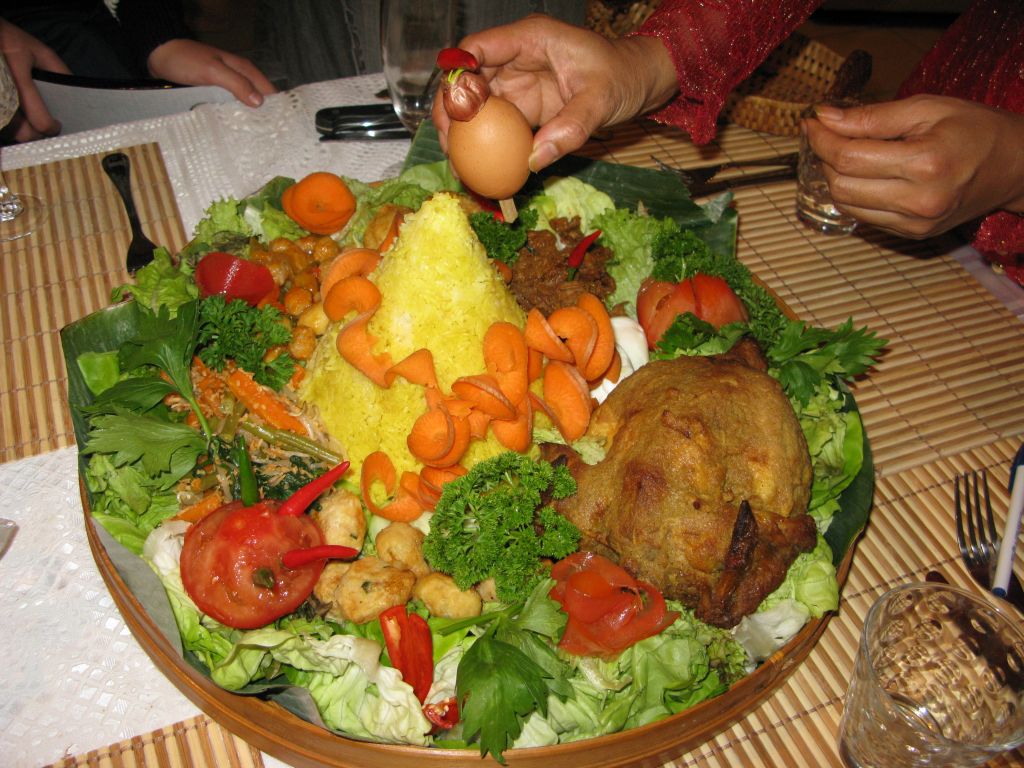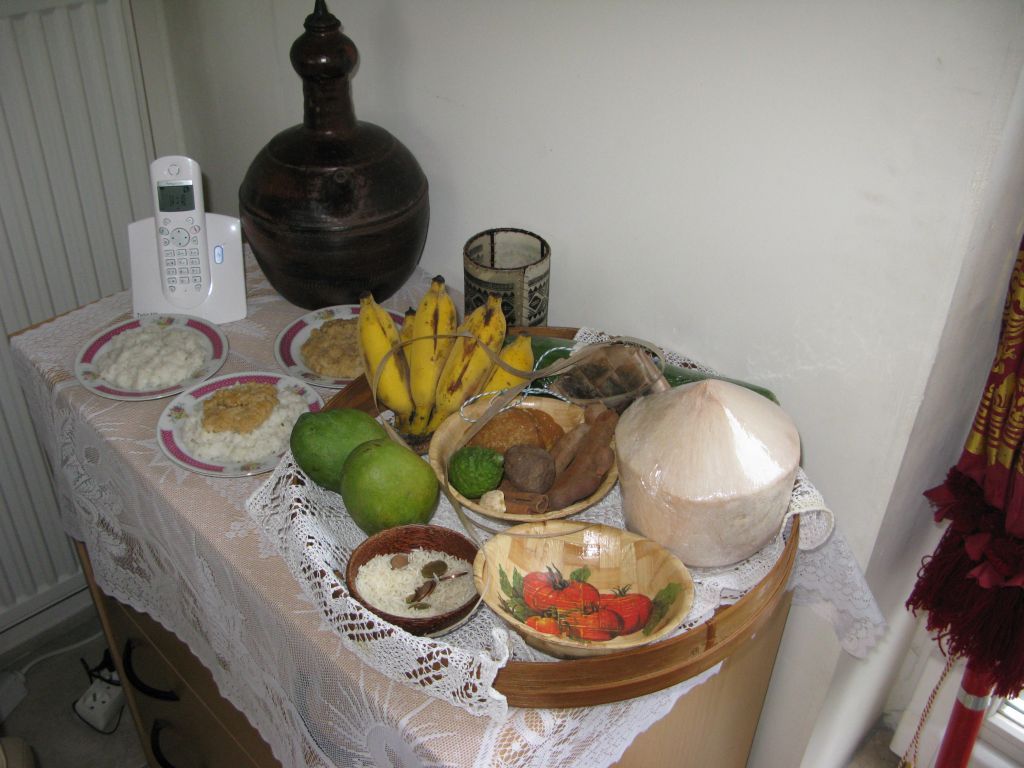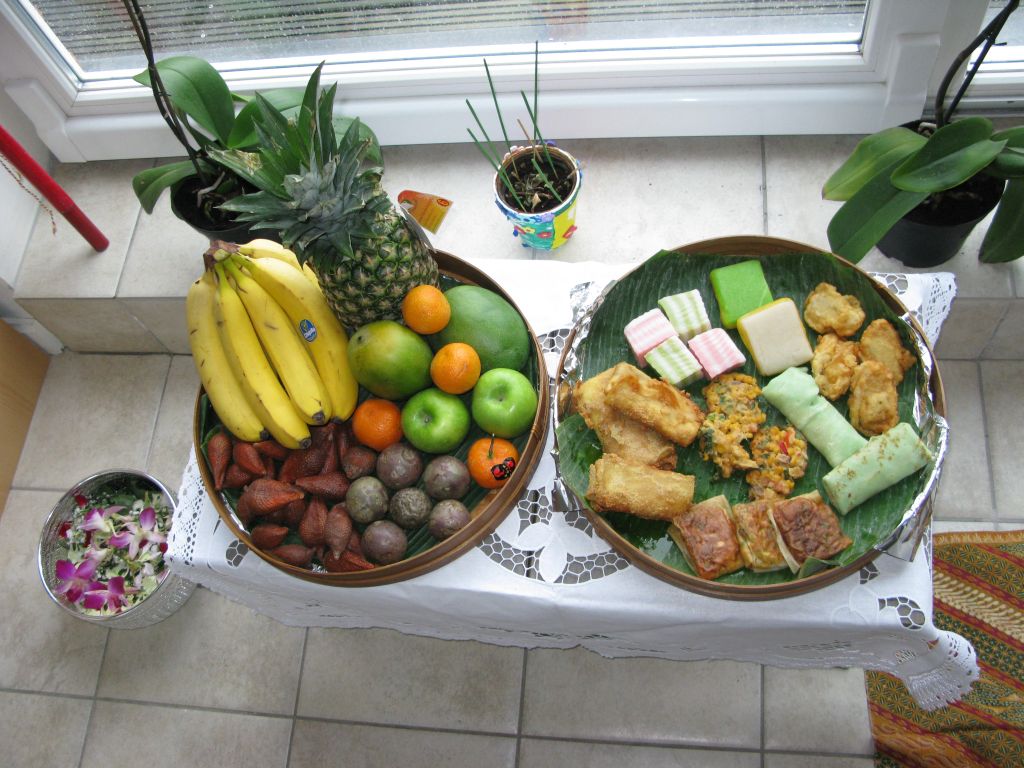The offering for the Siraman ceremony: Sajen
Traditionally, an offering in Javanese rituals is considered very important. It has a deep symbolic meaning.
This offer includes:
Tumpeng Robyong, a decorated Robyong Robyong rice cone.
The cone symbolizes life according to the doctrine of god. The decoration has the meaning of hope, fertility and prosperity. Various cooked vegetables are put around the cone: cabbage, soya sprouts, carrots and green beans. There are also several side dishes server around the cone: tempeh, anchovies, eggs. Everything is flavored with steamed, grated coconut.
Tumpeng Gundul, a rice cone without decoration and surrounded by seven types of porridge. This symbolizes the pure and the clean.
The 7 types of rice pudding are:
- white rice pudding (bubur putih)
- red rice pudding (bubur merah)
- half white and half red porridge
- white porridge with grated coconut and palm sugar (baro–baro)
- white porridge with red porridge in the middle
- red porridge with white porridge in a cross shape
- white porridge with red porridge in a cross shape
In addition, a Jajan pasar is setup: a stand with food and snacks from the market. It symbolizes the abundance of food on the market.
- Bananas (pisang raja, pisang pulut): these bananas have the characteristics of a king: they stand as a symbol of prosperity, honor and glorification. The bananas have a good taste, are fragrant and can be stored for a long time.
- Coconut: this fruit has the meaning of whishing a versatile person who is good for other people, a seriously attentive person, smart, perceptive and alert.
- Young palm leaves: for a bright, hopeful life.
- Rice: a symbol for success, life passion and hard work.
- Coconut sugar (gula Jawa).
- Miri nuts.
- Incense: Kemenyan.
- Flowers: cananga, jasmine, magnolia: Telon.
- Rooster.
- Money.
- Earthenware vase.
- Lemon.
- Young papaya: Pentil.
- Papaya leave.
- Lamp filled with palm oil: Lantera.
- Kris (dagger with a double, often wavy, blade)): Benang lawe.
- Kluwak nuts: Keluwak.
- Betel leave: Sirih.
- Betel nut: Pinang.






